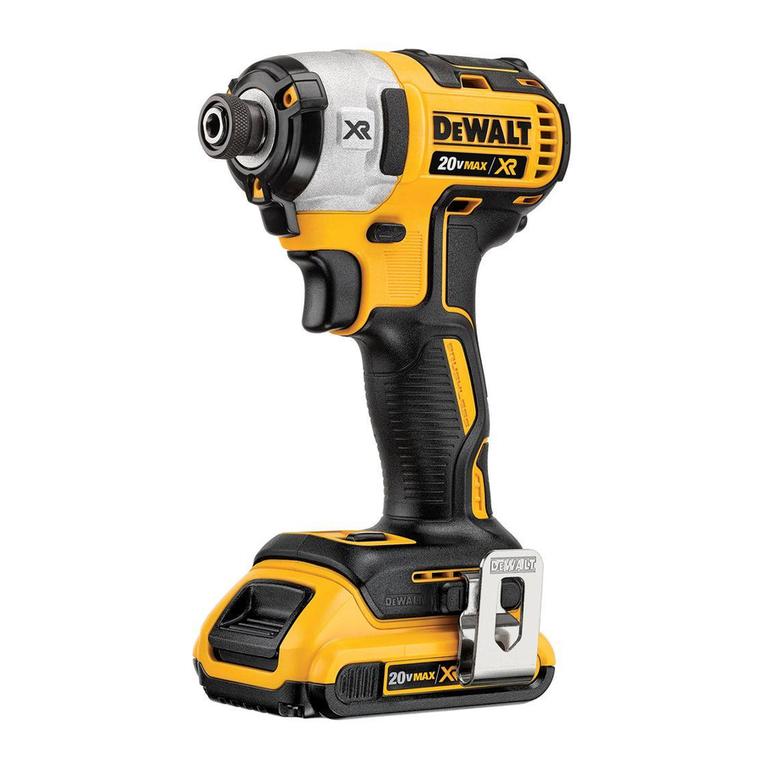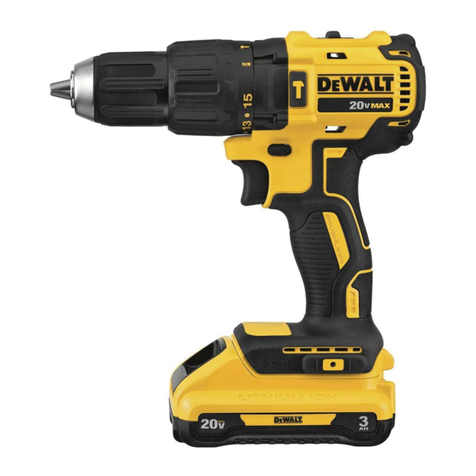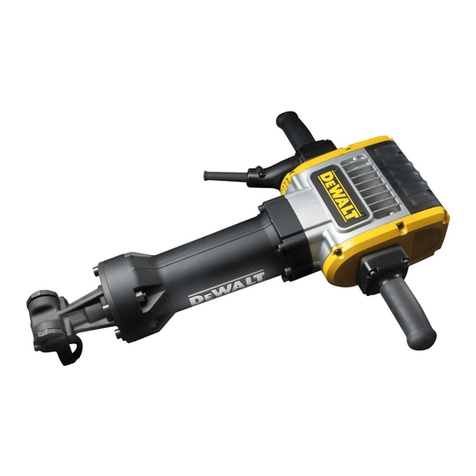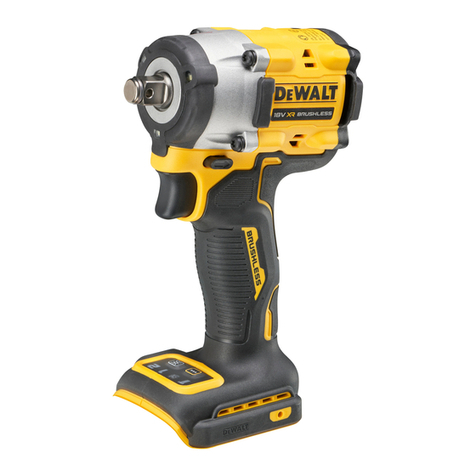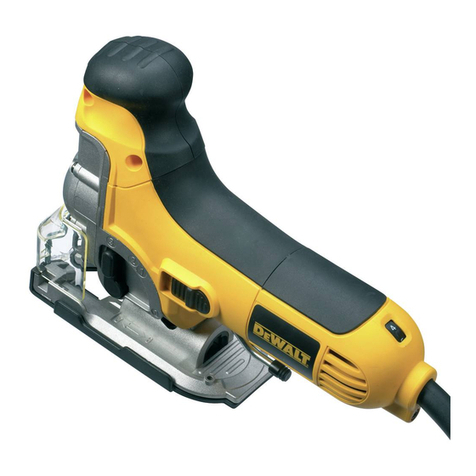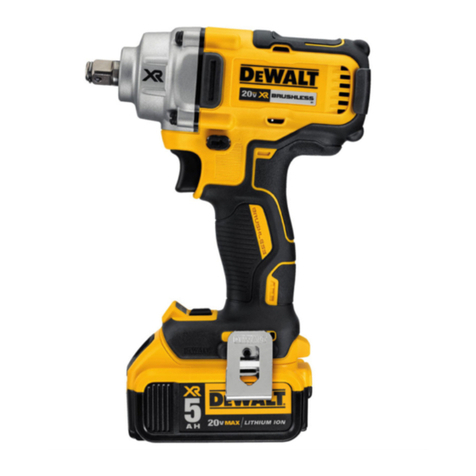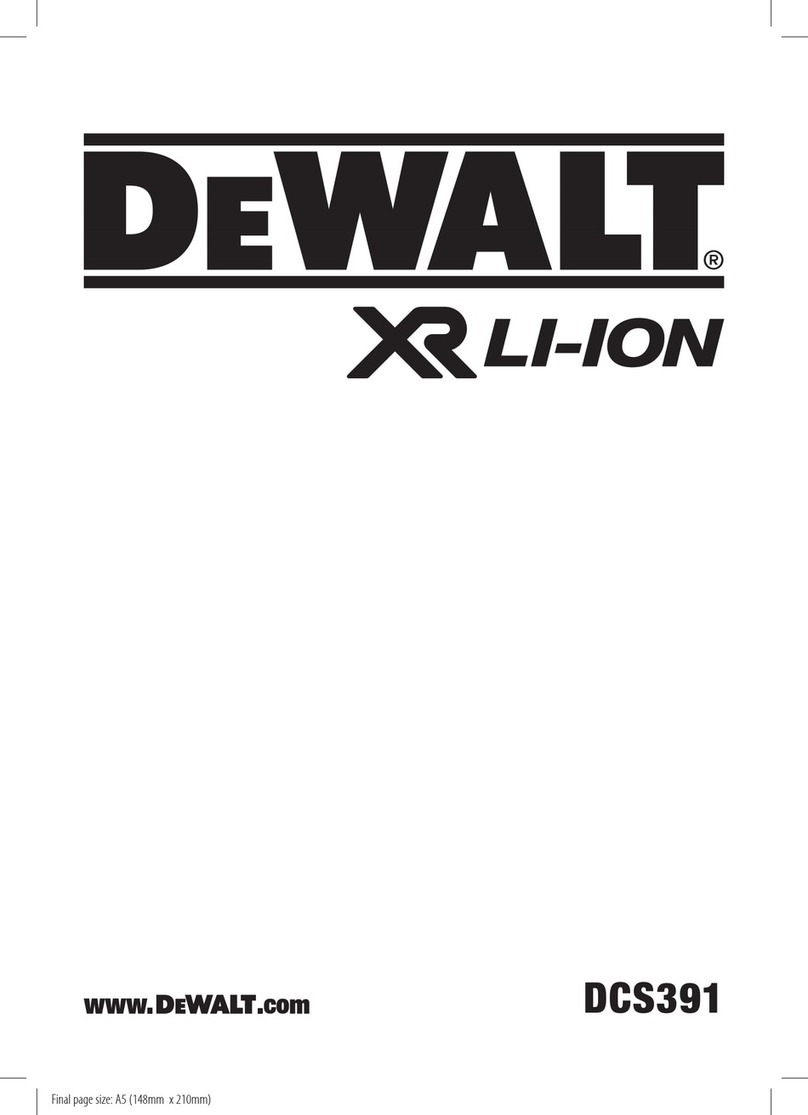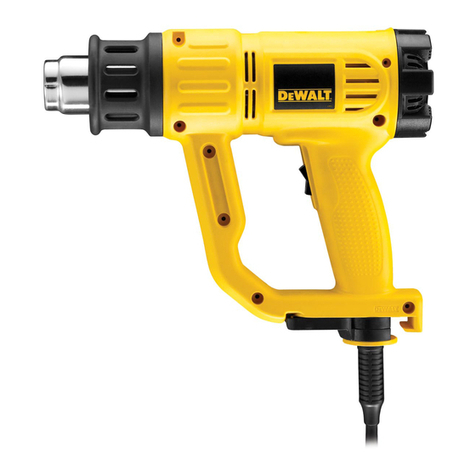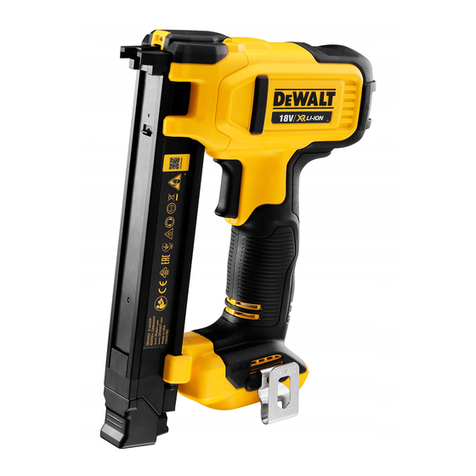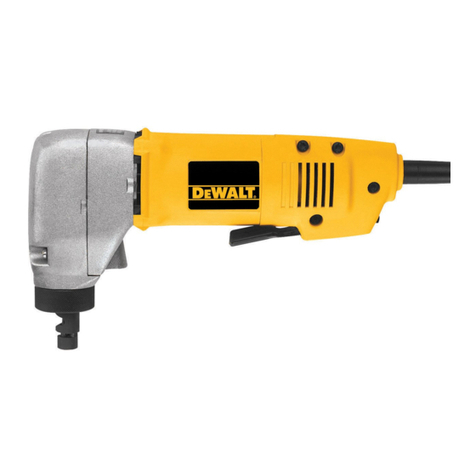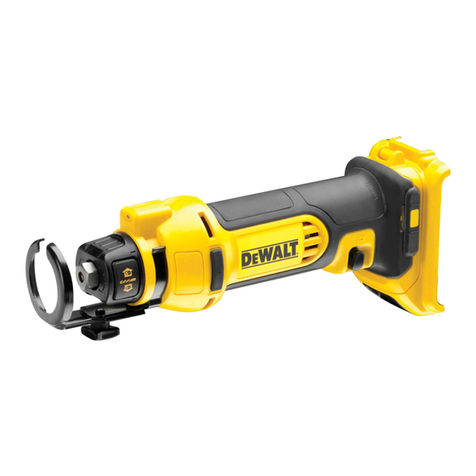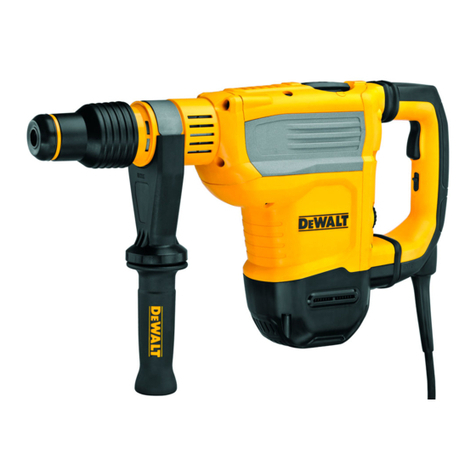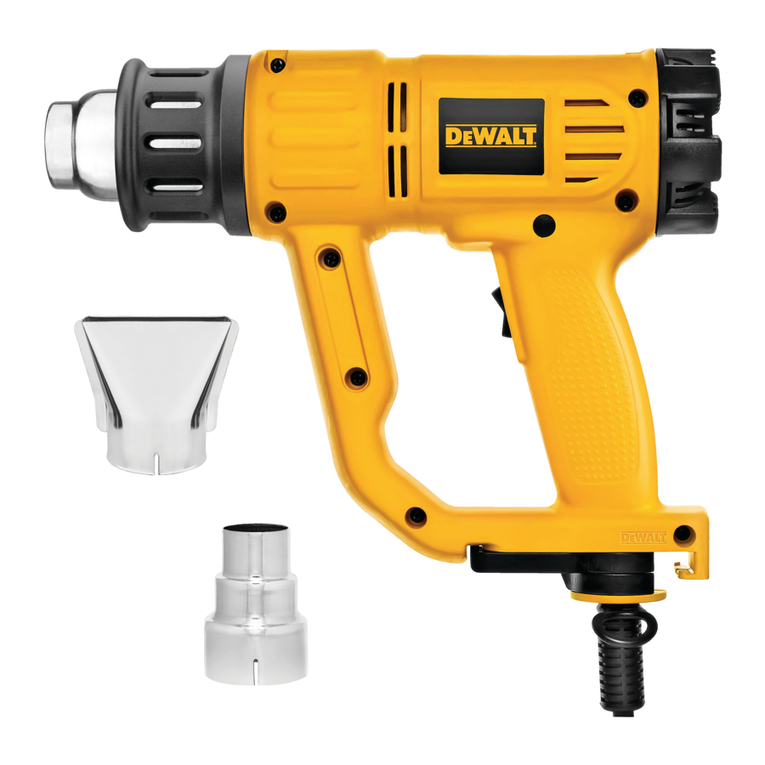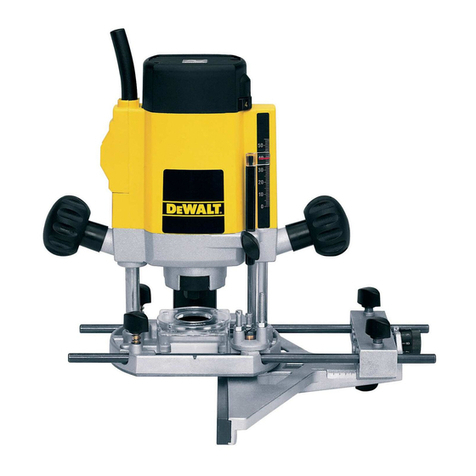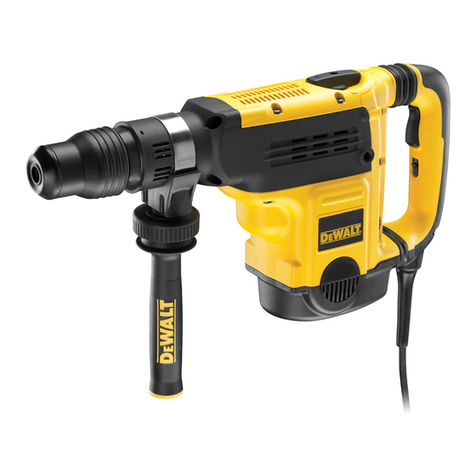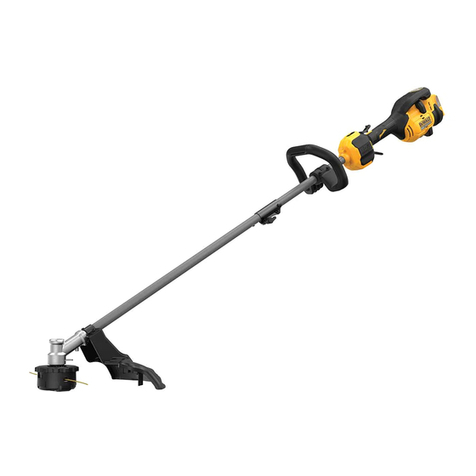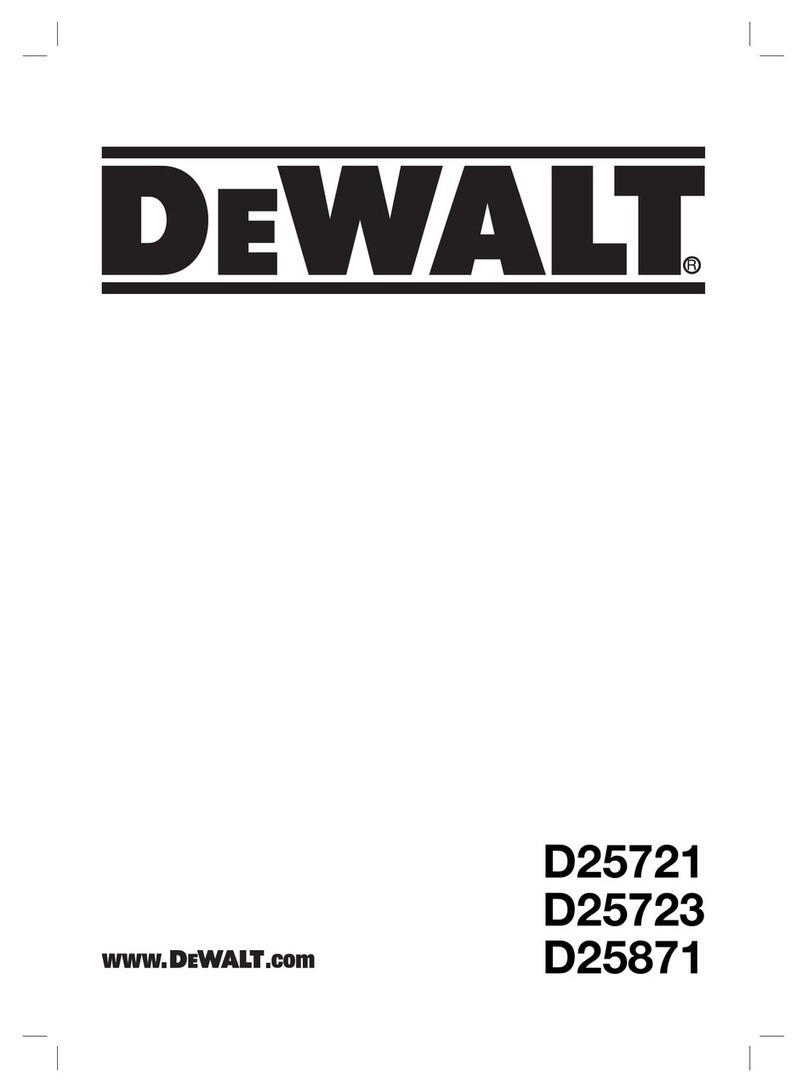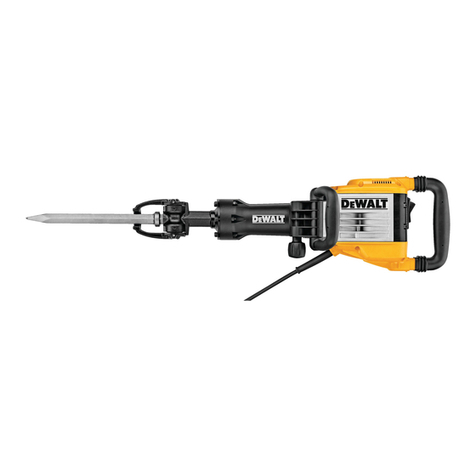ENGLISH
3
into account the working conditions and the
work to be performed. Use of the power tool for
operations different from those intended could result
in a hazardoussituation.
5) Battery Tool Use and Care
a ) Recharge only with the charger specified by the
manufacturer. A charger that is suitable for one type
of battery pack may create a risk of fire when used
with another batterypack.
b ) Use power tools only with specifically designated
battery packs. Use of any other battery packs may
create a risk of injury andfire.
c ) When battery pack is not in use, keep it away
from other metal objects, like paper clips, coins,
keys, nails, screws, or other small metal objects,
that can make a connection from one terminal to
another. Shorting the battery terminals together may
cause burns or afire.
d ) Under abusive conditions, liquid may be ejected from
the battery; avoid contact. If contact accidentally
occurs, flush with water. If liquid contacts eyes,
additionally seek medical help. Liquid ejected from
the battery may cause irritation orburns.
6) Service
a ) Have your power tool serviced by a qualified
repair person using only identical replacement
parts. This will ensure that the safety of the power
tool ismaintained.
Additional Safety Rules for Cable
Strippers
DANGER: Before making contact with any cables,
ensure that power has been removed from the
cable(s). Contacting live cables will result in electric
shock / serious injury or evendeath.
• Do not let familiarity gained from frequent use of
tools allow you to become complacent and ignore
tool safety principles. Careless action can cause severe
injurywithin a fraction of asecond.
• Keep handles and grasping surfaces dry, clean and
free from oil and grease. Slippery handles and grasping
surfaces do not allow for safe handling and control of the
tool in unexpectedcircumstances.
• NEVER insert fingers into bushing or strippingbarrel.
• Keep all body parts away from the stripper
mechanism. A moment of inattention while
operating power tools may result in serious personal
injury. Do not strip short pieces of material that put
fingers near the bushing. Blades aresharp.
• DO NOT STRIP LIVE WIRES. Do not operate tool near
live wires. This tool is not manufactured to ASTM F1505,
or IEC 60900. Always de-energize lines and equipment
prior to working on, or aroundthem.
• Secure and support the cable prior to stripping to
prevent movement during work. Ensure the stripped-
off remnant will not create a hazard after thework.
• Keep a firm grip on the tool at all times. Forces on the
tool may change during and afterstripping.
• ALWAYS wear ANSI Z87.1 eye protection (CAN/CSA
Z94.3). Cutting operations may cause material pieces to
fly. Flying particles can cause permanent eyedamage.
• Always wear gloves when handling cable. The ends
can be sharp and can cause serious personalinjury.
• Inspect tool and bushing before use. Replace any worn or
damaged parts. A damaged or improperly assembled tool
can break and strike operator or nearbypersonnel.
• Always wear safety shoes to protect your feet from sharp
metal debris on thefloor.
• Connection can only be effective when it is free from
defects such as residual jacket or damaged conductor.
Proper preparation and installation is the responsibility of
the installing contractor.
• The recommended bushings for the various cable types
is based off of the cable manufacturer’s published cable
dimensions. Actual cable dimension may vary. If cable
does not strip properly using recommended bushing try a
smaller or larger bushing. Refer to Trouble Shooting. User
is responsible to ensure cable has been stripped propperly.
Additional Safety Information
WARNING: ALWAYS use safety glasses. Everyday
eyeglasses are NOT safety glasses. Also use face or
dust mask if cutting operation is dusty. ALWAYS WEAR
CERTIFIED SAFETYEQUIPMENT:
• ANSI Z87.1 eye protection (CAN/CSA Z94.3),
• ANSI S12.6 (S3.19) hearing protection,
• NIOSH/OSHA/MSHA respiratoryprotection.
WARNING: Some dust created by power sanding,
sawing, grinding, drilling, and other construction
activities contains chemicals known to the State
of California to cause cancer, birth defects or
other reproductive harm. Some examples of these
chemicalsare:
• lead from lead-based paints,
• crystalline silica from bricks and cement and other
masonry products, and
• arsenic and chromium from chemically-
treatedlumber.
Your risk from these exposures varies, depending on how
often you do this type of work. To reduce your exposure to
these chemicals: work in a well ventilated area, and work with
approved safety equipment, such as those dust masks that are
specially designed to filter out microscopicparticles.
• Avoid prolonged contact with dust from power
sanding, sawing, grinding, drilling, and other
construction activities. Wear protective clothing and
wash exposed areas with soap and water. Allowing
dust to get into your mouth, eyes, or lay on the skin may
promote absorption of harmfulchemicals.
WARNING: Use of this tool can generate and/
or disperse dust, which may cause serious and
permanent respiratory or other injury. Always use
NIOSH/OSHA approved respiratory protection

